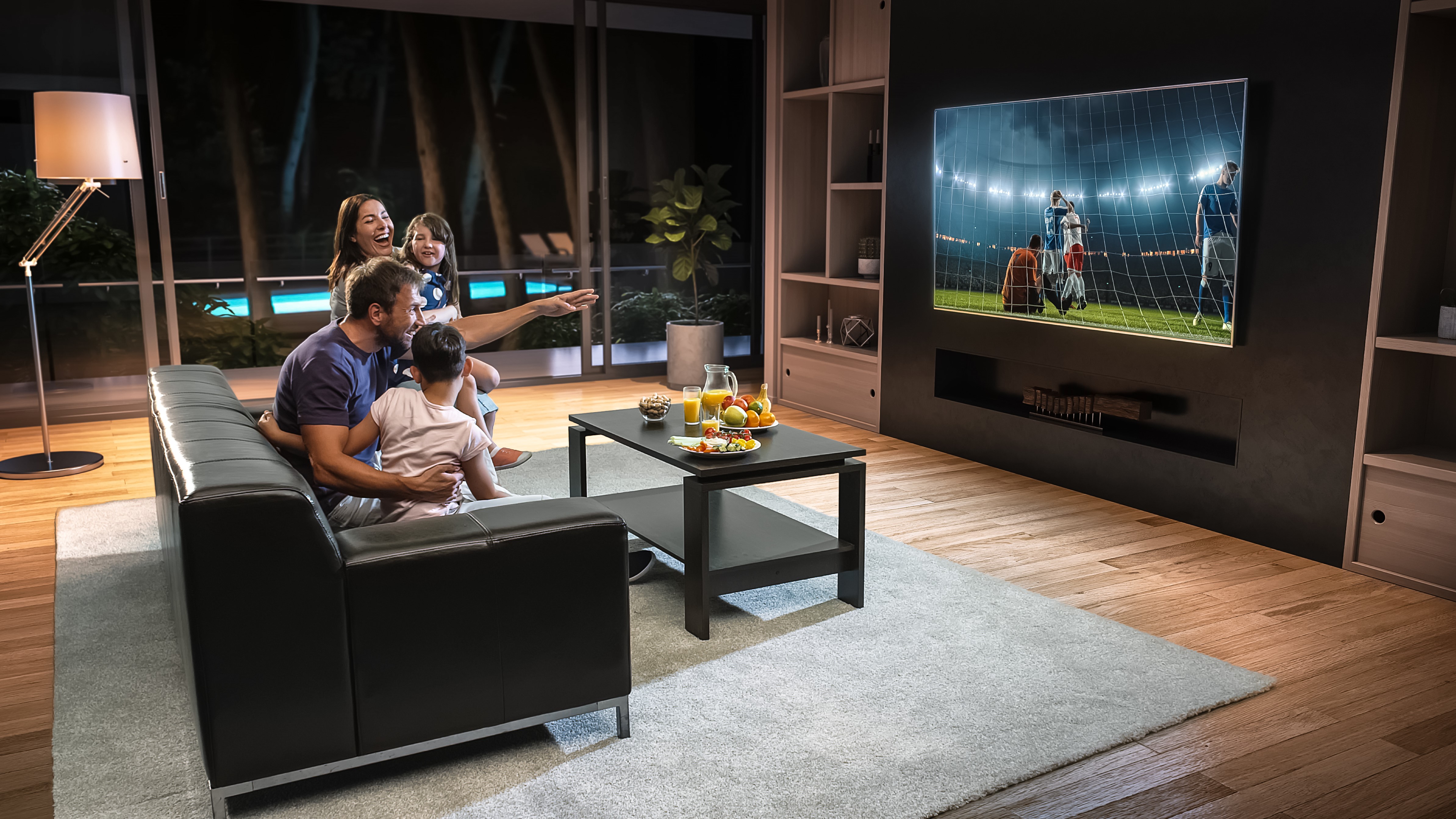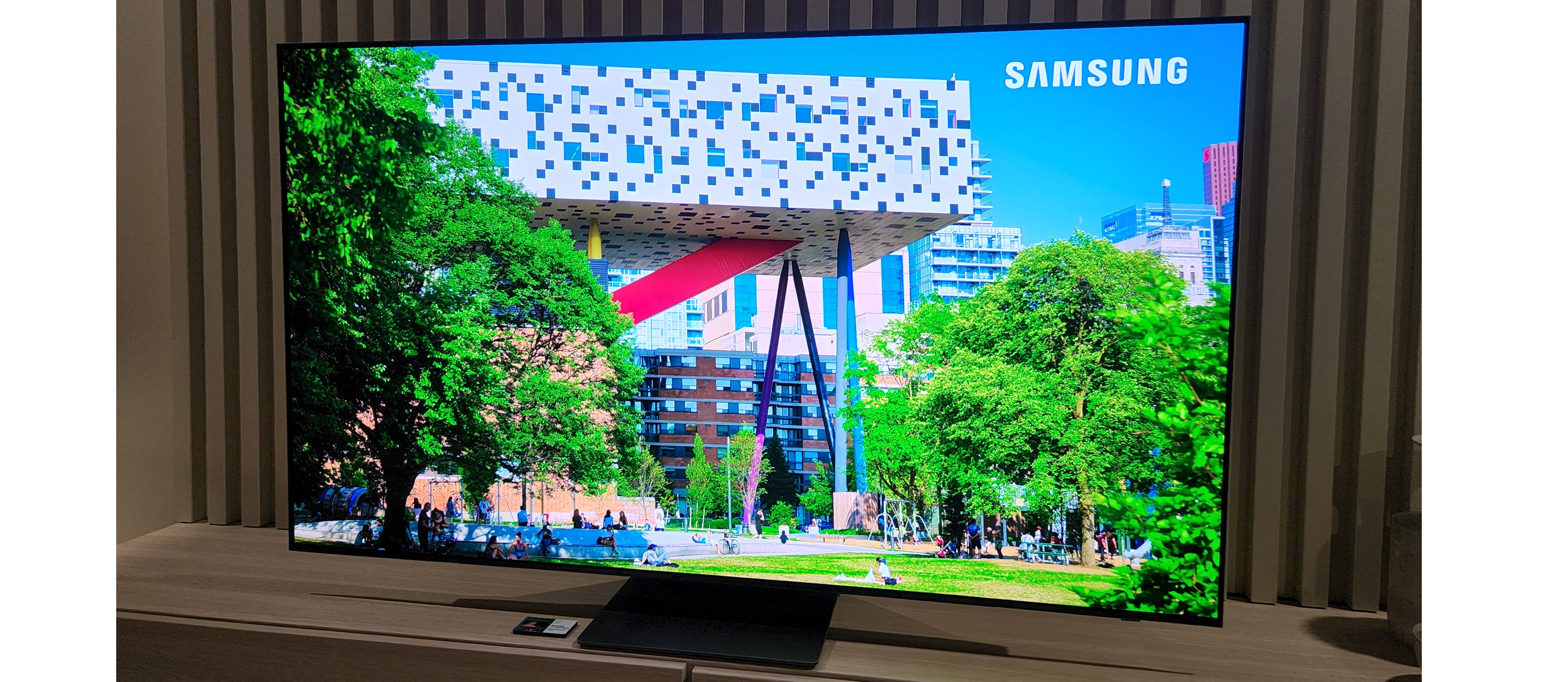What size TV should you buy?
Here are our top tips for buying the right sized TV

What size TV should you buy? It’s easy to be lured into buying a new TV with talk of 4K (or 8K) resolution, high-end smart TV features, or fancy speaker arrays. However, if you haven’t got the right TV size for you, you can end up with an oversized display that you keep walking into, or a way-too-small screen that you have to squint to see from across your living room.
The right TV for you will depend on how many people will be watching, the image quality you want, and, more often than not, how much room and budget you have. Another thing to consider if you're going to be wall-mounting your TV too, using one of the best TV wall mounts.
To help guide you through the process of picking your next TV we've created a guide that explains exactly what a TV's size means, plus why you should opt for one size of TV over another.
How does TV sizing work?
Before you decide what size TV is best for you, let’s go over what it means to have a 42-inch screen compared to a 65-inch. It’s clear that a 65-inch TV will be larger, but it’s not immediately obvious how much bigger it will be.
The size of a screen, be it a smartphone, TV, or PC monitor is measured diagonally from corner to corner.
Most modern TVs use a 16:9 aspect ratio: for every 16-inches they measure horizontally they measure 9-inches vertically. As such, you can reasonably expect the screen size of TVs to measure:
- 42-inch: 36.6-inch x 20.6-inch (93.0cm x 52.3cm)
- 48-inch: 41.8-inch x 23.5-inch (106.3cm x 59.8cm)
- 50-inch: 43.6-inch x 24.5-inch (110.7cm x 62.3cm)
- 55-inch: 47.9-inch x 27.0-inch (121.8cm x 68.5)
- 65-inch: 56.7-inch x 31.9-inch (143.9cm x 81.0cm)
- 75-inch: 65.4-inch 36.8-inch (166.0cm x 93.4cm)
- 85-inch: 74.1-inch x 41.7-inch (188cm x 106cm)
Take note that this is just for the actual screen, the frame around it and the stand’s size and shape will vary for each individual TV model. Be sure to check your dream TV’s actual size before you head to the checkout; you don’t want to bring home a screen that’s too large for the space you have.
Sign up for breaking news, reviews, opinion, top tech deals, and more.
Why should you buy a 48-inch TV or smaller?
One of the main reasons to choose a TV that’s under 50-inches is its price. TVs on the smaller end of the spectrum are much more budget-friendly than their larger counterparts. Though that’s not just because they’re more compact, smaller screens often lack some of the upgrades that are given to 55-inch or bigger TVs.
Case in point, the new LG C2 OLED TVs come in sizes as small as 42-inch, but to get a model with premium OLED Evo panels you’ll need to buy at least the 55-inch variant.
As such, screens of this size can come with some performance restrictions that you wouldn’t find with larger TVs – where there is a wider selection of TVs that offer high-end features. But in return, your wallet won’t be hit so hard when you decide to take one of these sized screens home with you.
Beyond their price, smaller 42-inch TVs and 48-inch TVs are also well suited to smaller spaces. If you just haven’t got space in your living room for a massive screen, then this is the size you’ll want to look out for.

These factors also make this size of TV great for a kitchen or bedroom, or an oversized computer monitor. The smaller frame means they won’t have to compete as much for space against other more useful objects in the room, and you won’t as easily go broke buying a second or third screen to deck out your home.
You could also go even smaller with a 32-inch TV. Much like 42-inch and 48-inch TVs you can expect to pay a bit less for screens this small, though once again you’ll lose out on high-end features (which can include 4K picture resolution when you get this small).
Why should you buy a 55-inch or 65-inch TV?
For those after an impressive home cinema experience that’s value for money, or want the longest list of options to choose between, 55-inch TVs and 65-inch TVs are what you want to be grabbing for your next TV.
Starting at these sizes, you’ll start to find a much broader spectrum of TVs boasting high-end performance features. This includes LG C2 OLED Evo TV; the Samsung S95B and Sony Bravia A95K QD-OLED displays; and Samsung’s QN95A Neo QLED among others.
Though, if you are on a tighter budget, there’s a swathe of 55-inch and 65-inch LCD screens that still offer a decent-sized 4K image but come with fewer bells and whistles. A budget 55-inch TV can set you back as little as £400 / $400 / AU$600, though you can also find more expansive models for $2,000 / £2,000 / AU$2,800.
Plus, while you can expect to pay more than a 42-inch or 48-inch TV for one of this size, you won’t be hit with the exorbitantly large price jump that comes from the bigger screens (75-inch and larger). Generally, 55-inch and 65-inch TVs offer the most bang for your buck.

These are your home cinema centerpiece screens that can entertain larger groups and families, the kinds you want to soup up with a great soundbar. They’ll be large enough to take up a sizable portion of your vision – but not so enormous that a regular-sized living room will struggle to fit one in.
That being said, we’d still recommend you measure out your space before buying one of these TVs for yourself just to be sure you do have enough space.
Why should you buy a 75-inch or larger TV?
If you’re looking for the best home cinema setup that money can buy, then you’ll probably want to splash the cash on 75-inch TV or 85-inch TV.
Just like with 55-inch and 65-inch TVs, you’ll find plenty of options in the 75-inch plus range that offer showstopping picture and audio performance. You can expect 4K or even 8K images brought to life by OLED Evo and QD-OLED panels, plus the speakers might be so good you can forgo a soundbar.

Though, you’ll struggle to find more budget-friendly options. There are cheaper, lower spec'd 75-inch and 85-inch TVs out there but expect price tags that are at a minimum $1,000 / £1,000 / AU$1,500 if not significantly higher (around $9,000 / £10,000 / AU$12,000).
Plus these TVs are larger than you might. It’s very possible you just don’t have the space to accommodate a screen this large in your home without completely rearranging your furniture – and even that might not be enough.
If space isn’t a problem for you though then you might want to consider buying a projector instead of a large TV. Even the best projectors do have some immediate downsides, they require a lot of white wall space to project onto and you need to be able to blackout the room you’re in. But if you can tick these boxes they have a lot to offer in terms of image quality and picture size – many getting as large as 300-inch.
This alternative won’t suit everyone, but if image size is what you care most about a projector could be your best bet.

Hamish is a Senior Staff Writer for TechRadar and you’ll see his name appearing on articles across nearly every topic on the site from smart home deals to speaker reviews to graphics card news and everything in between. He uses his broad range of knowledge to help explain the latest gadgets and if they’re a must-buy or a fad fueled by hype. Though his specialty is writing about everything going on in the world of virtual reality and augmented reality.